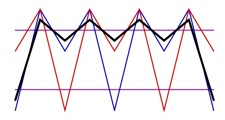Forcing Theorems via Morse-Conley-Floer Homology
From a mathematical view point, the advantage of rigorous numerics over simulations is that the outcomes can be used as components in the building of mathematics. This is often expressed in the form of forcing theorems: if one finds a certain type of solution, then this implies (by analytic theory) other properties of the dynamical system. The most famous result of this type is the theorem period-3 implies chaos for interval maps. Mathematics in general is riddled with such statements, where the assumptions in the theorems are in practice very hard if not impossible to check for any specific system, at least not by hand. It is in overcoming this obstacle that part of my research is dedicated to combine rigorous numerics with Morse-Conley-Floer theory to obtain new forcing theorems in differential equations.





